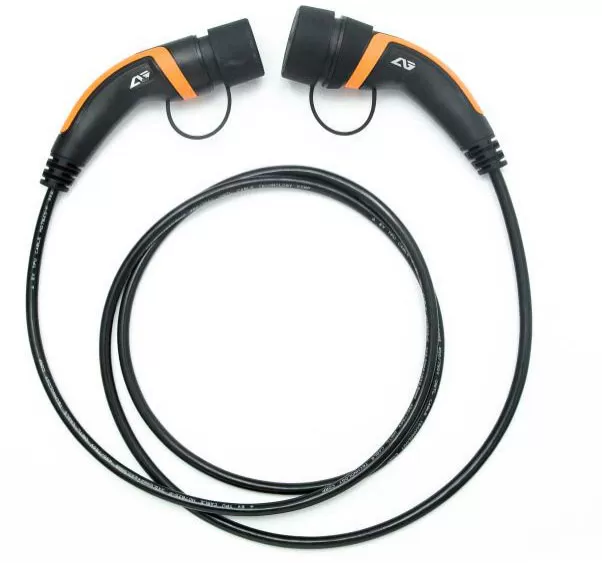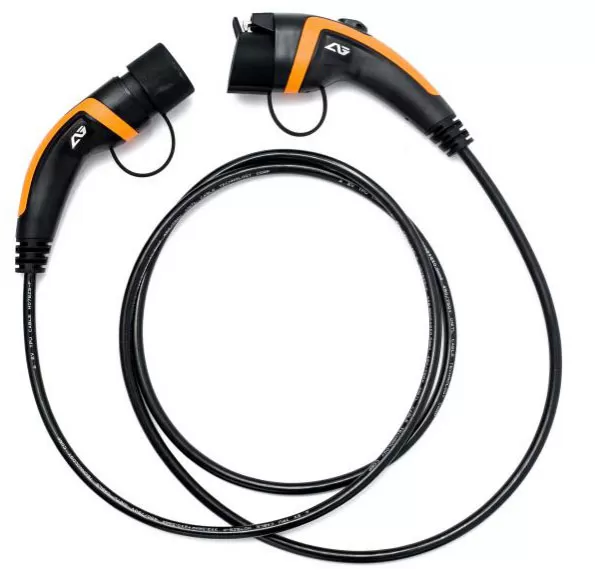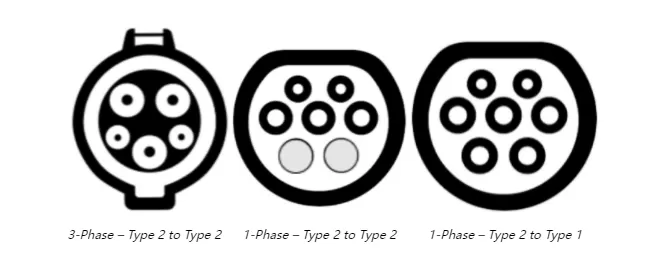When choosing a charging cable for an electric car, we’re often presented with lots of details only electricians are familiar with. What is Type 2, and what does phase mean? Here are the answers.
On the online shop, They display the types of charging cables you can buy for your car. The most common cables are:
· 7.5-metre charging cable – Type 2 – 32A – 1 Phase
· 7.5-metre charging cable – Type 2 – 32A – 3 Phase
· 7.5-metre charging cable – Type 1 – 32A – 1 Phase
How will you know which charging cable is right for your car? The answer to this is most likely provided on your car’s socket, but in this article, we will provide the answers to what exactly phase, type and 32A mean.
Scroll until you find the answer you’re looking for, or read the article from start to end if you want! We estimate that the article will take about 3 minutes to read.
They can range from 4 metres to 7.5 metres. If you opt for the latter, this should fit in most cases, regardless of whether your car’s socket is on the front, back or side, and whether you prefer to park with the front-facing in or out.
Type 1 and Type 2 are the names used for two different power sockets. The plugs and sockets you have in your home, the ones we all recognise, are called Schuko. You will see Type 2 sockets at most charging stations – maybe you’ve noticed that they are a bit different from the normal plug sockets?
Type 2 have become an EU requirement. This means that all new, rechargeable cars sold in Norway must have this type of ev charging connectors as standard.
When looking for what kind of cable you’ll need to get for your car then, it is a good idea to start by finding out what Type (1 or 2) it has.
Most cars have a type 2 ev connector, but some cars will have Type 1. The 2015 model of the Nissan Leaf is a well-known example of a car with a Type 1 connector. If your car has a Type 1 connector, you will need a charging cable with Type 1 at one end and Type 2 at the other end, so it can be plugged into both the car and the charging station.


On the image: The cable on the left is Type 2. The cable on the right is Type 1.
This indicates how powerful the fuse is, and how much power you can use before the fuse blows. You may want to compare this to the car’s horsepower. A fuse with 32 horsepower will charge the car much faster than one with a fuse of just 10 horsepower. The main advantage of having a 32A charging cable is that there is no limit to what the charging cable can provide. You can also charge the car with a 32A cable, even if you know the fuse in your fusebox is 25A. A 32A charging cable is also a little thicker and heavier than a charging cable with fewer amps (A), but the performance will be better.
The power grid for the world in which we live is divided into three phases. You can compare these three phases to a three-lane power motorway. If you use 1-phase to charge your car, you can only use one of the three power lines, and it’ll take more time to charge up fully than if you used all three lanes. If you use a 3-phase to charge your car, you can use all three of the power lines, and as a result, it’ll take a lot less time to charge your car.
So if you have a cable with 3 phases, it means that you can charge faster (if the car supports 3-phase charging). You can achieve a charging power of 22 kW, compared to 7.2 kW, which is most common for 1-phase. The higher the kW, the less time it’ll take to charge your car.

No, but it can be useful. If you have two charging cables, you can keep one in the car for charging when you’re out and about, and the other can be kept at home.
There is a difference in quality, just like there is for everything else in the world. A good quality cable can withstand a lot of use and is much less likely to develop a fault. The materials must meet high requirements for durability.
A low-quality cable will experience more faults due to the cable itself and will react poorly to daily use. Low-quality cables are usually made of cheap materials and are prone to wear and tear.
When charging an electric car, a lot of electricity is transferred between the connector and the cable. You can think of it (that is, the phases) like rush hour on the motorway going on for several hours. And when that much electricity passes through the same connector over such a long period of time, it is important that the contact surface in the transfer between the charging cable and connector is large enough that no heat is generated.
In comparison, your average plug socket has a very small contact surface, so that heat can be generated if it is used to charge your car.
As a professional electric vehicle charging equipment manufacturer, AG Electrical can provide you with different electric vehicle charging plugs from type 1 plug to type 2 plug.
Also, we provide OEM/ODM service with the complete supply chain from concept design to MP(Mass Production).
As an experienced team, we are capable of designing and manufacturing Industrial products with strict quality control systems.
Do not hesitate to contact us if you need to.
